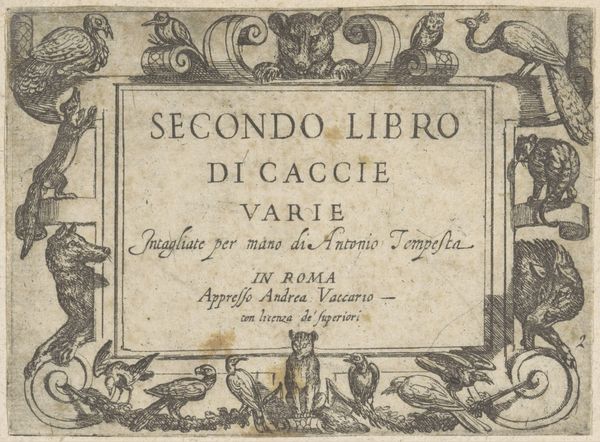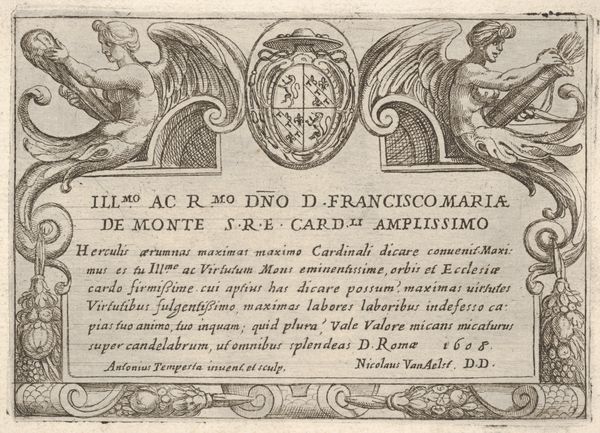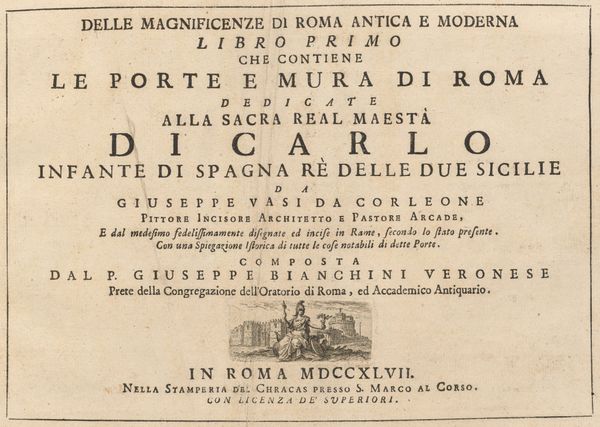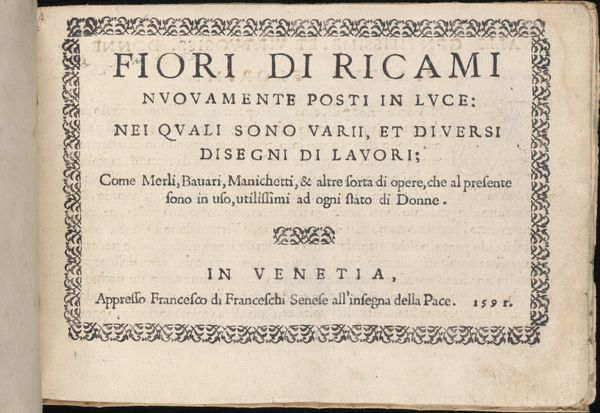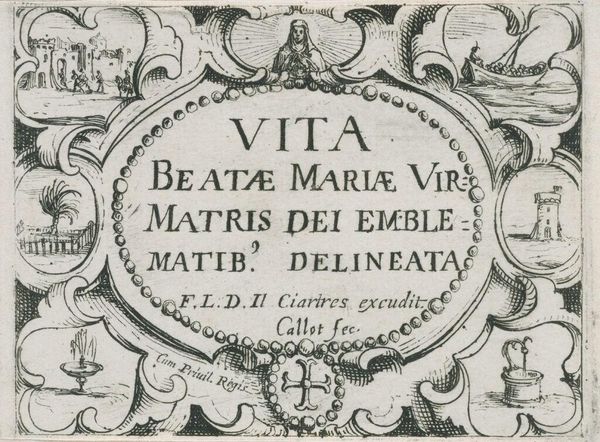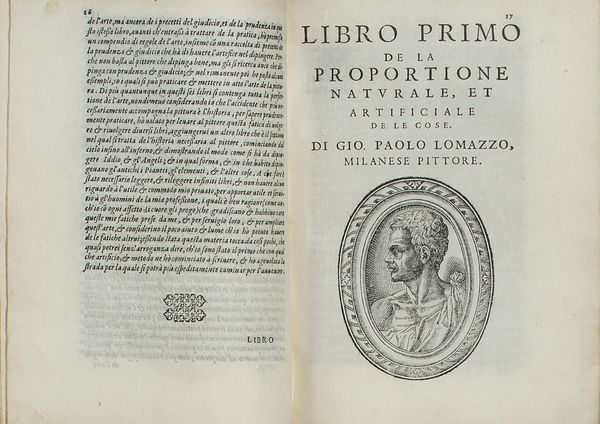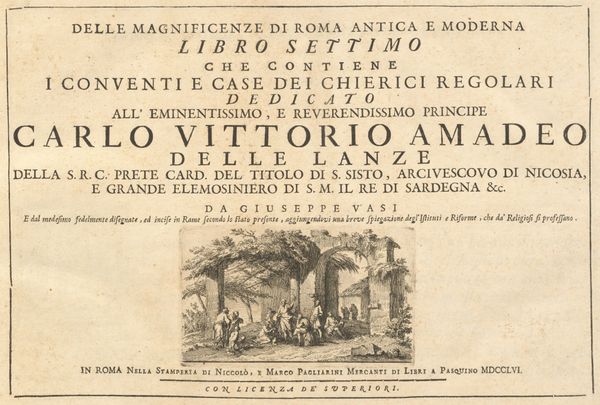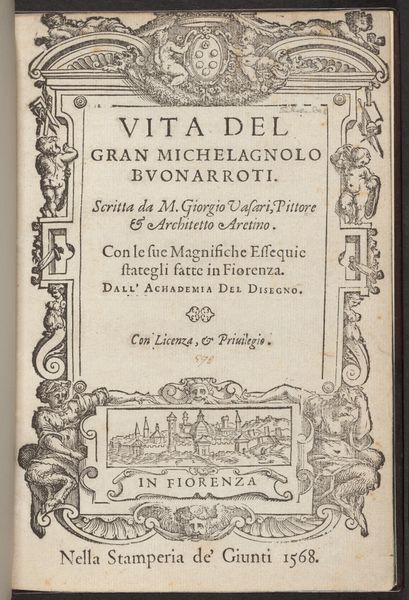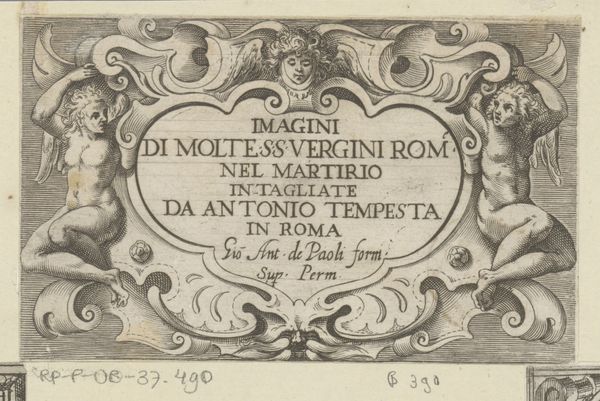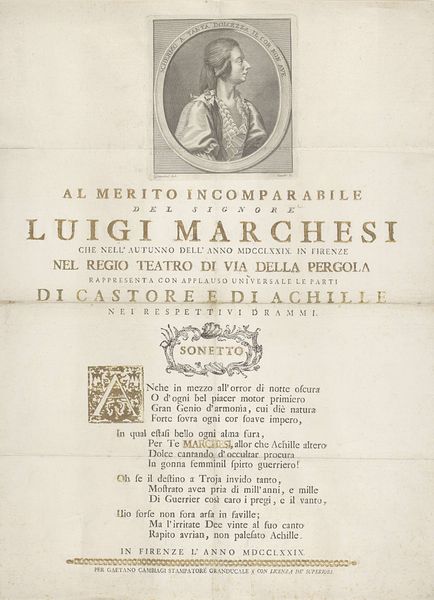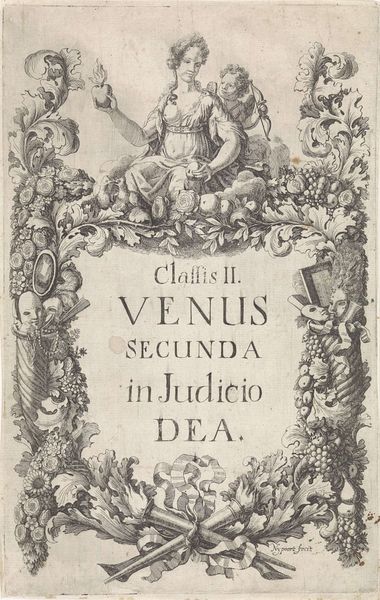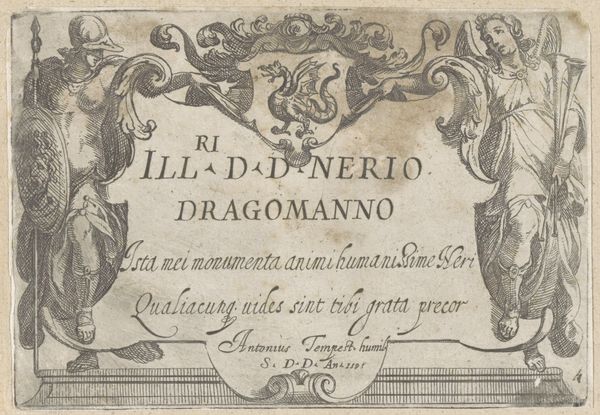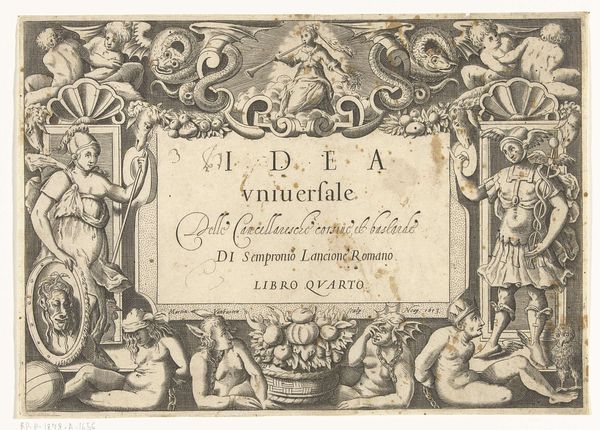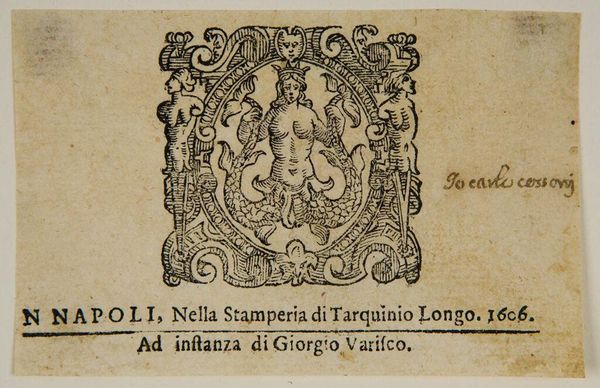
Titelprent met cartouche met titel en rand met dieren, midden onder een aap 1598
0:00
0:00
print, engraving
# print
#
landscape
#
figuration
#
11_renaissance
#
line
#
italian-renaissance
#
engraving
Dimensions: height 96 mm, width 133 mm
Copyright: Rijks Museum: Open Domain
Editor: This is the title page for "Primo Libro di Caccie Varie" by Antonio Tempesta, created in 1598. It's an engraving. I'm immediately drawn to the contrast between the formality of the text and the somewhat chaotic arrangement of animals framing it. What catches your eye? Curator: For me, it's about process and material. We have an engraving – a fundamentally reproducible medium. But the imagery is so focused on the aristocratic pursuit of the hunt. How does this tension play out between the democratization of the image through printmaking and the elitist subject matter depicted? It’s a very tactile and visual thing, and the tools needed to do something like this make you wonder, did Tempesta have royal connections? Editor: That’s fascinating. I hadn't thought about the relationship between the *means* of production and the image's *content*. The subject is something produced and hunted for by aristocrats, so is this print also somewhat made for aristocrats to signal themselves and be elevated above everyone else? Curator: Exactly! The act of commissioning such prints, the specialized labor required to create them, even the materials – ink, paper, the press itself – all point to specific networks of patronage and consumption. Who was able to afford this, and what social function did owning something like this serve? Editor: It really makes you think about art beyond just its aesthetic value. It's a record of its time, the available technology, the economic systems... everything that contributed to its existence. Curator: Precisely. By examining the material conditions, we can begin to unravel the complex web of power and production that shaped artistic creation. Looking closely helps us look deeply, and thinking critically, helps to view art within our historical understanding. Editor: That makes me look at all art through an entirely new lens! Thanks.
Comments
No comments
Be the first to comment and join the conversation on the ultimate creative platform.
